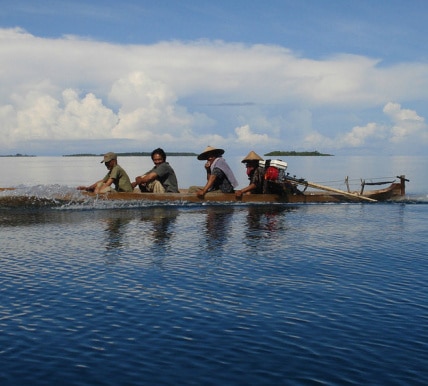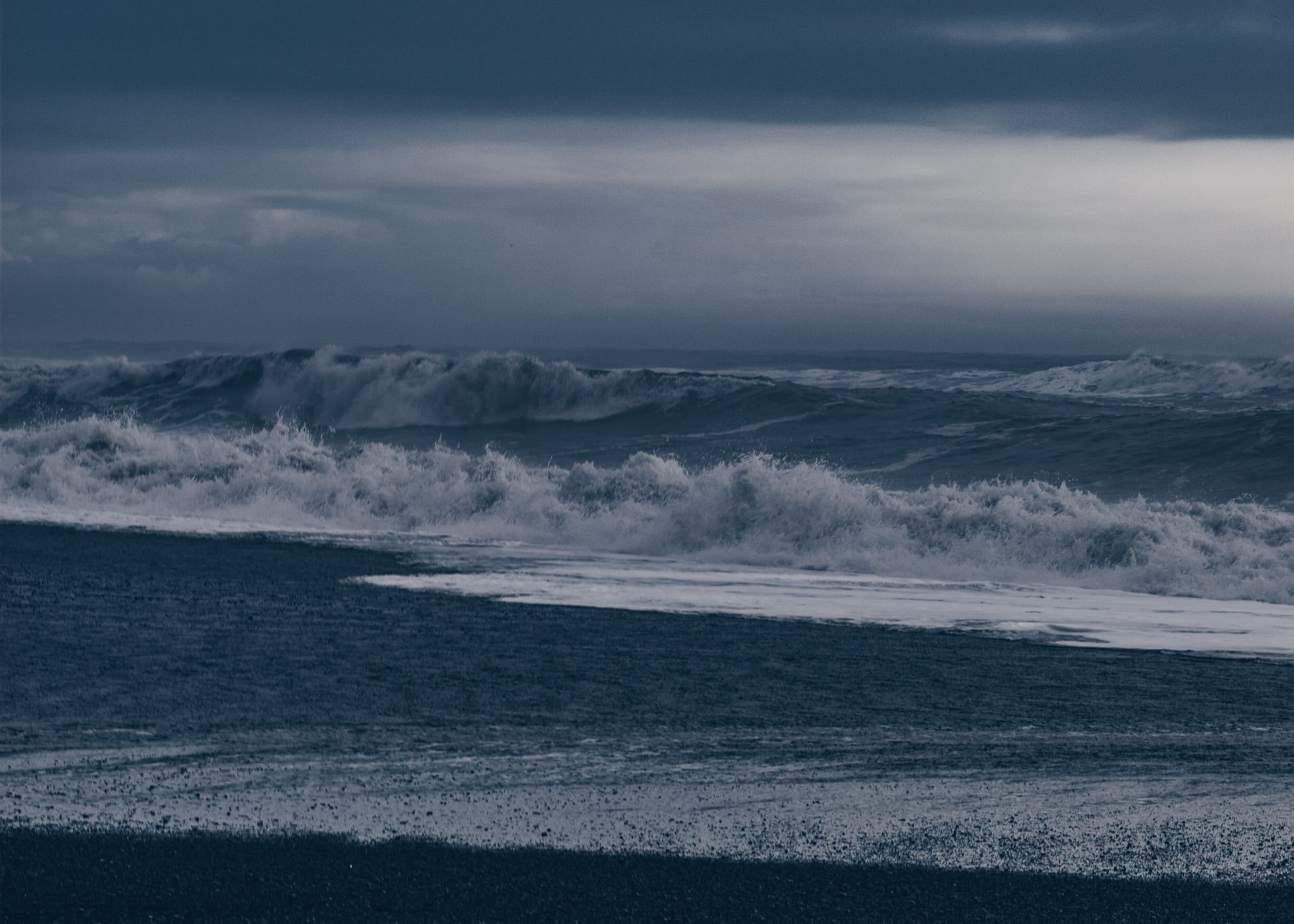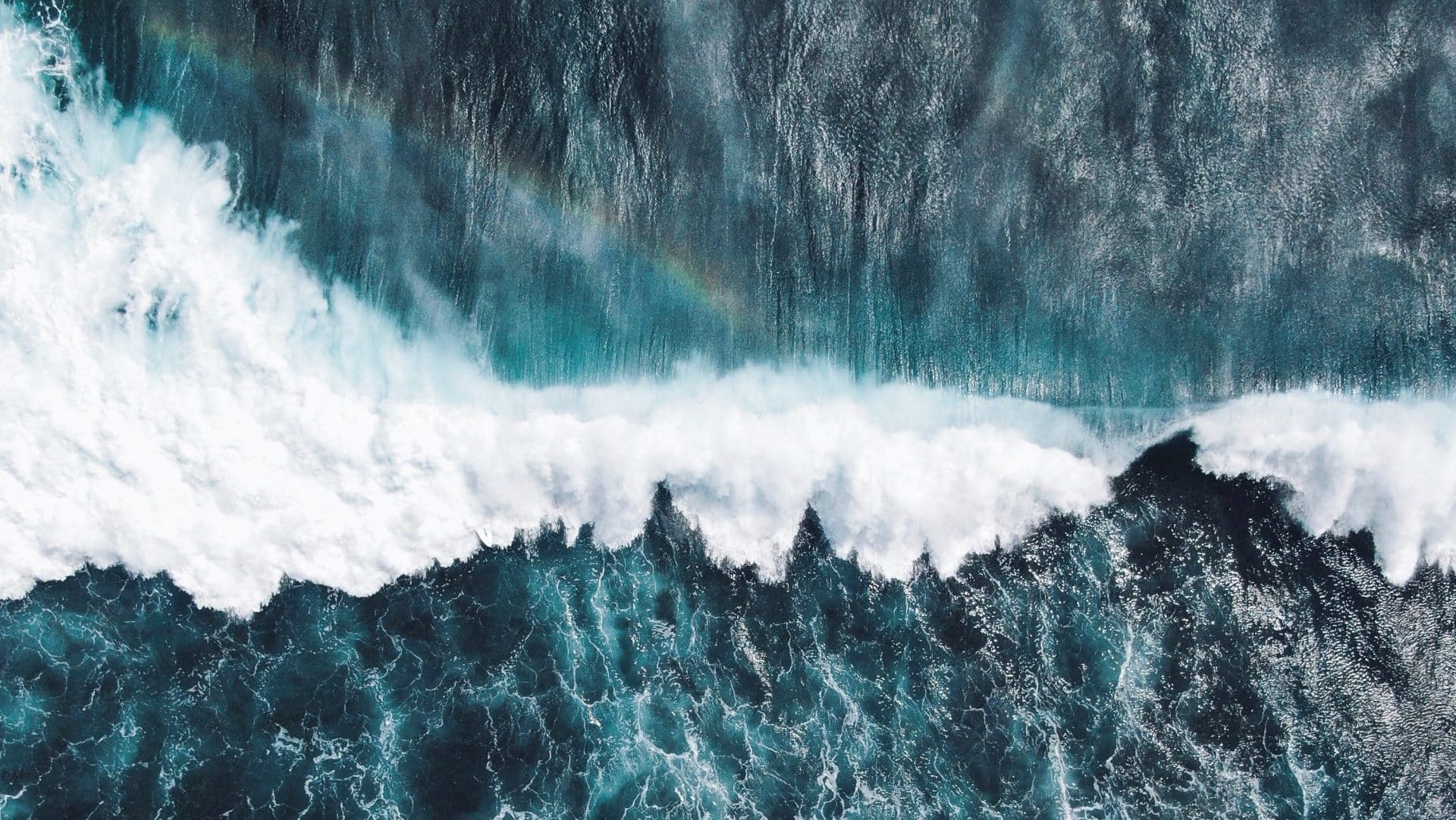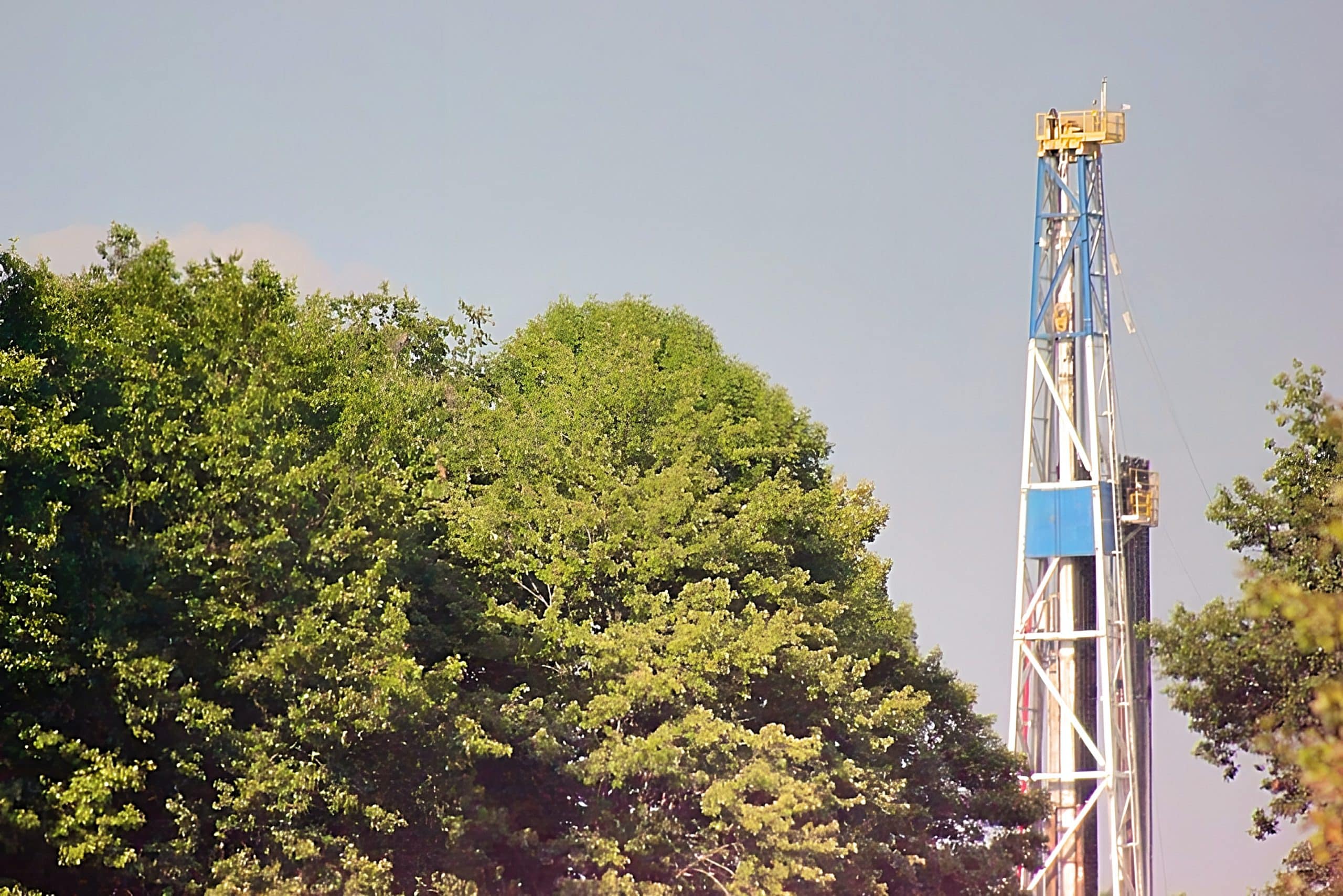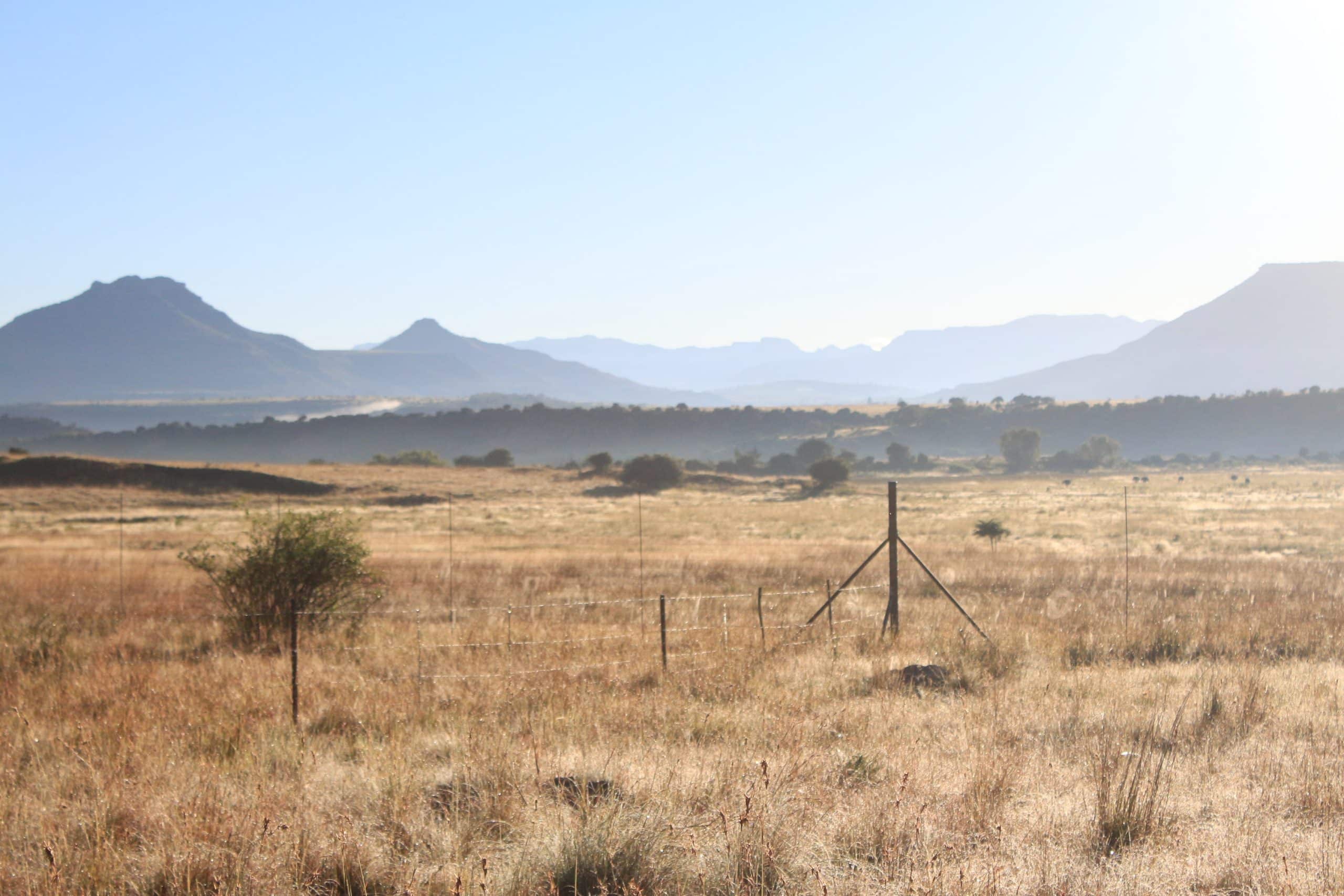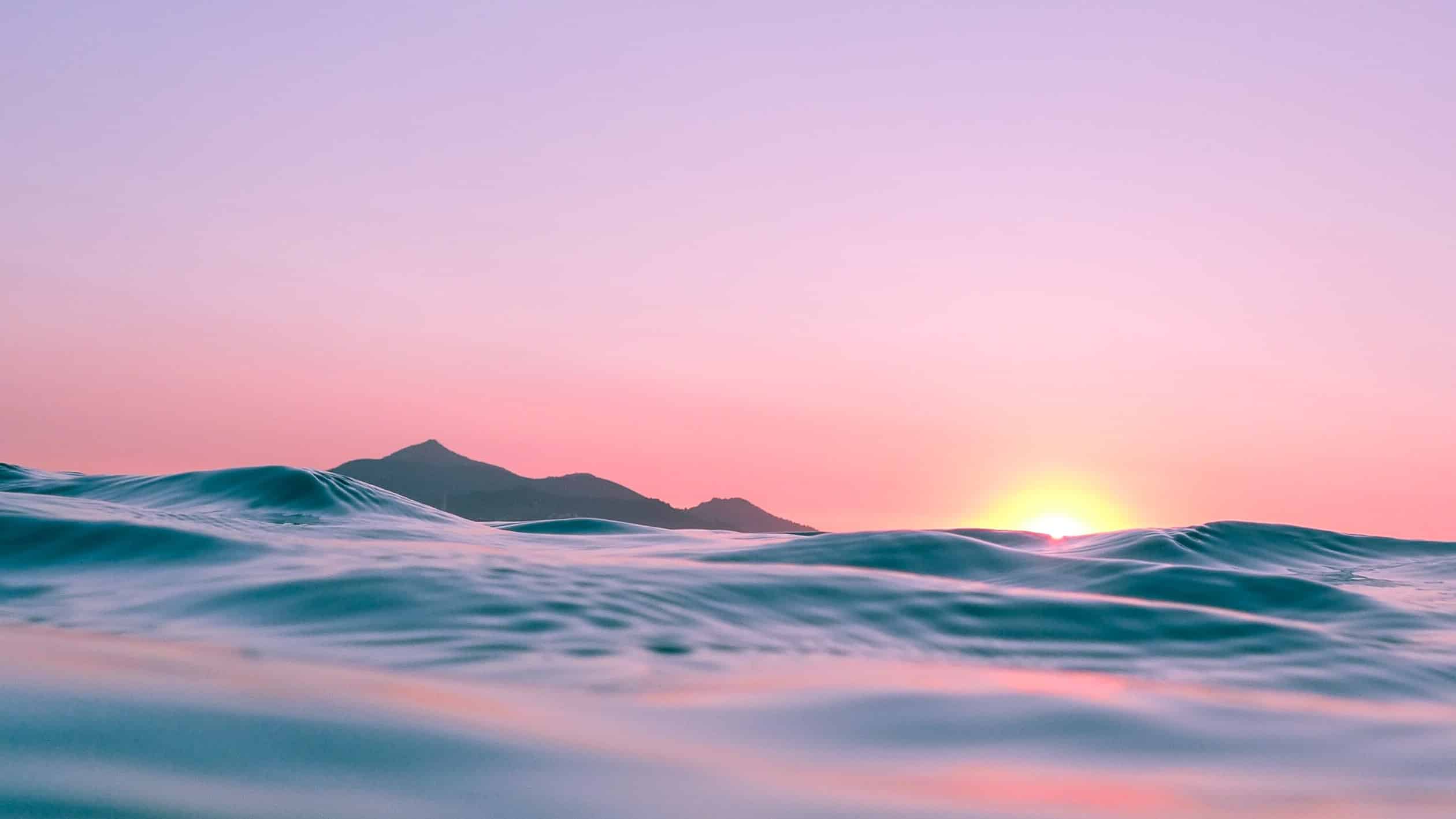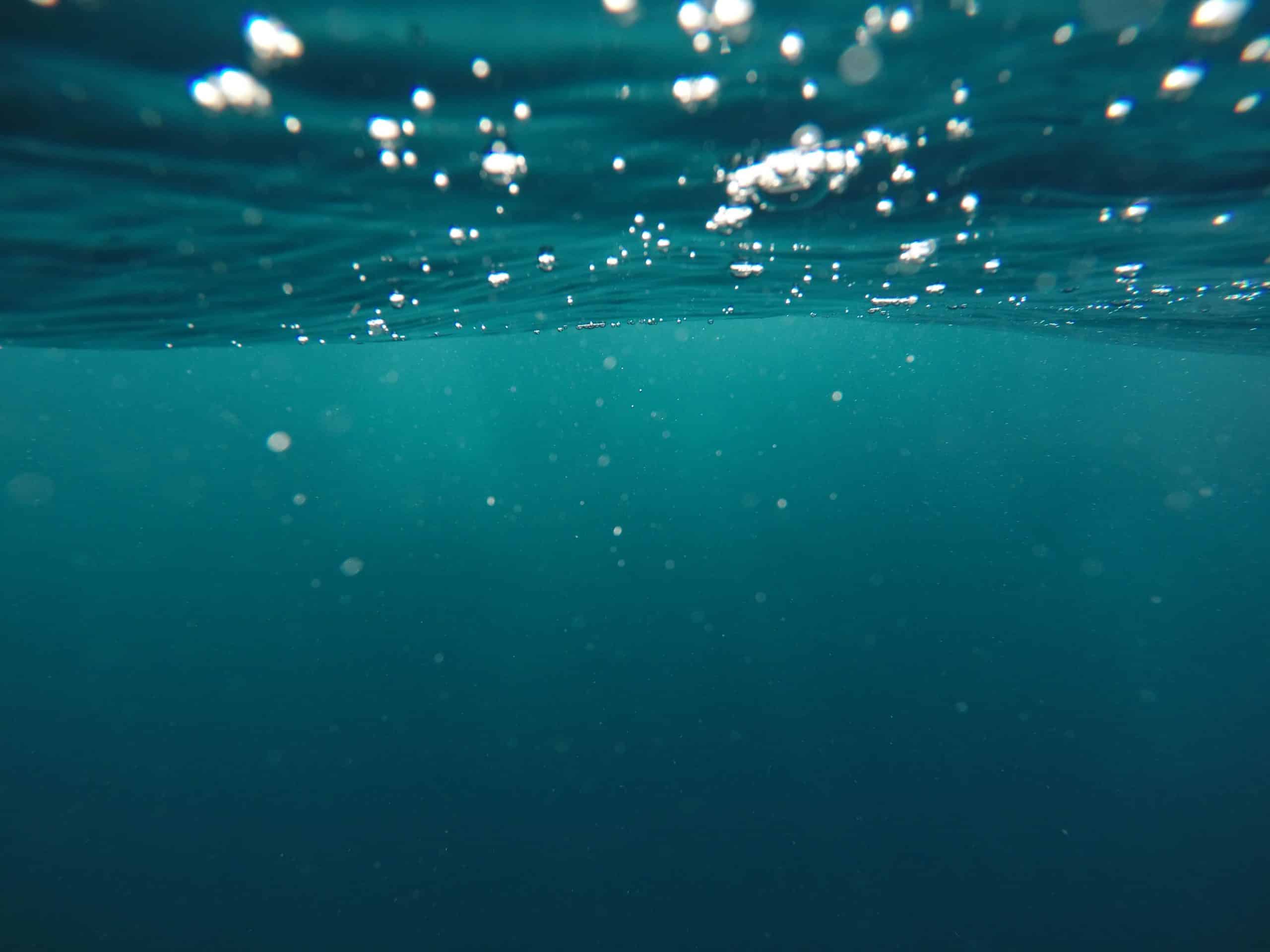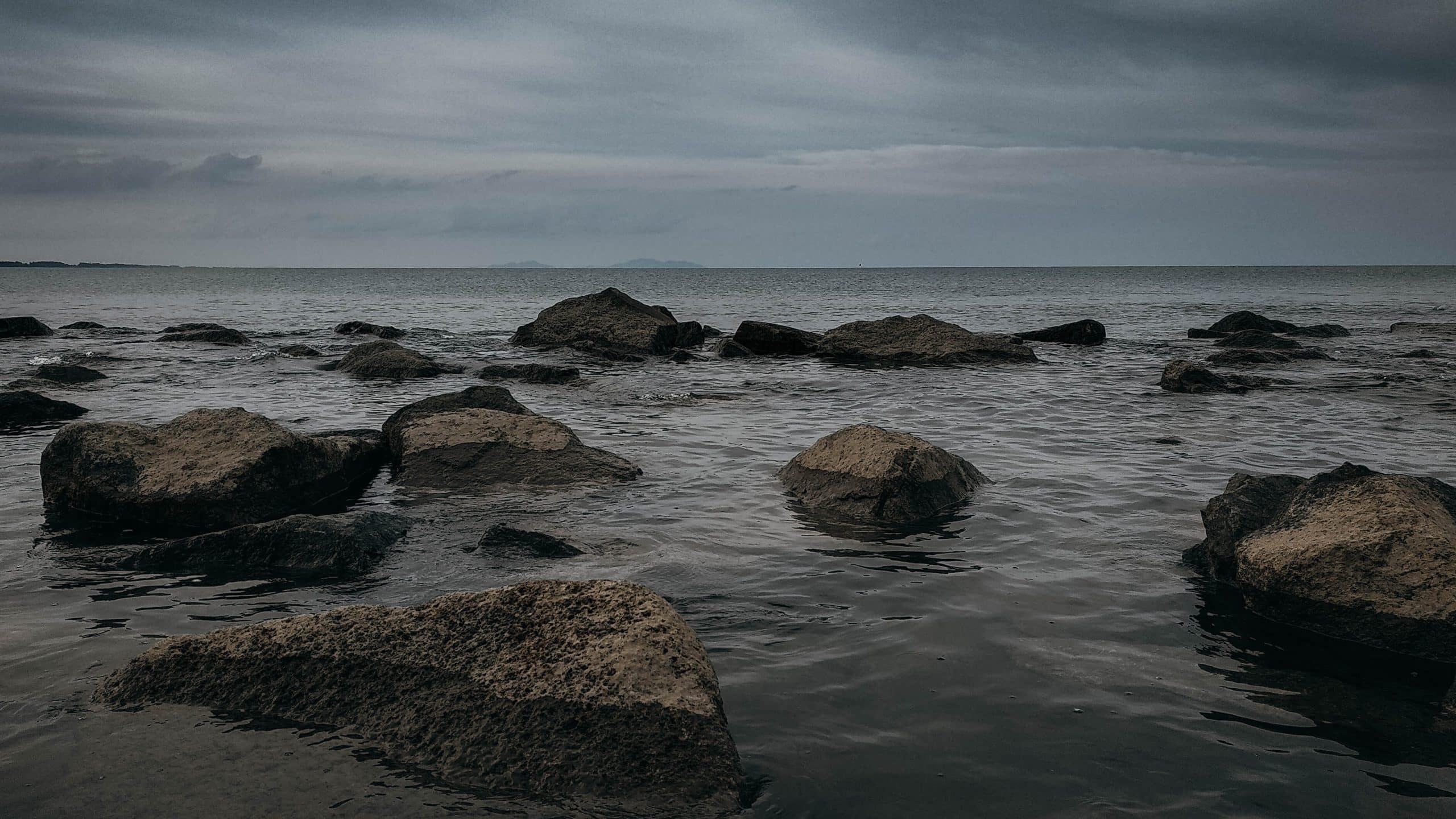Artificial Upwelling
Type
Areas of deployment
Proposal
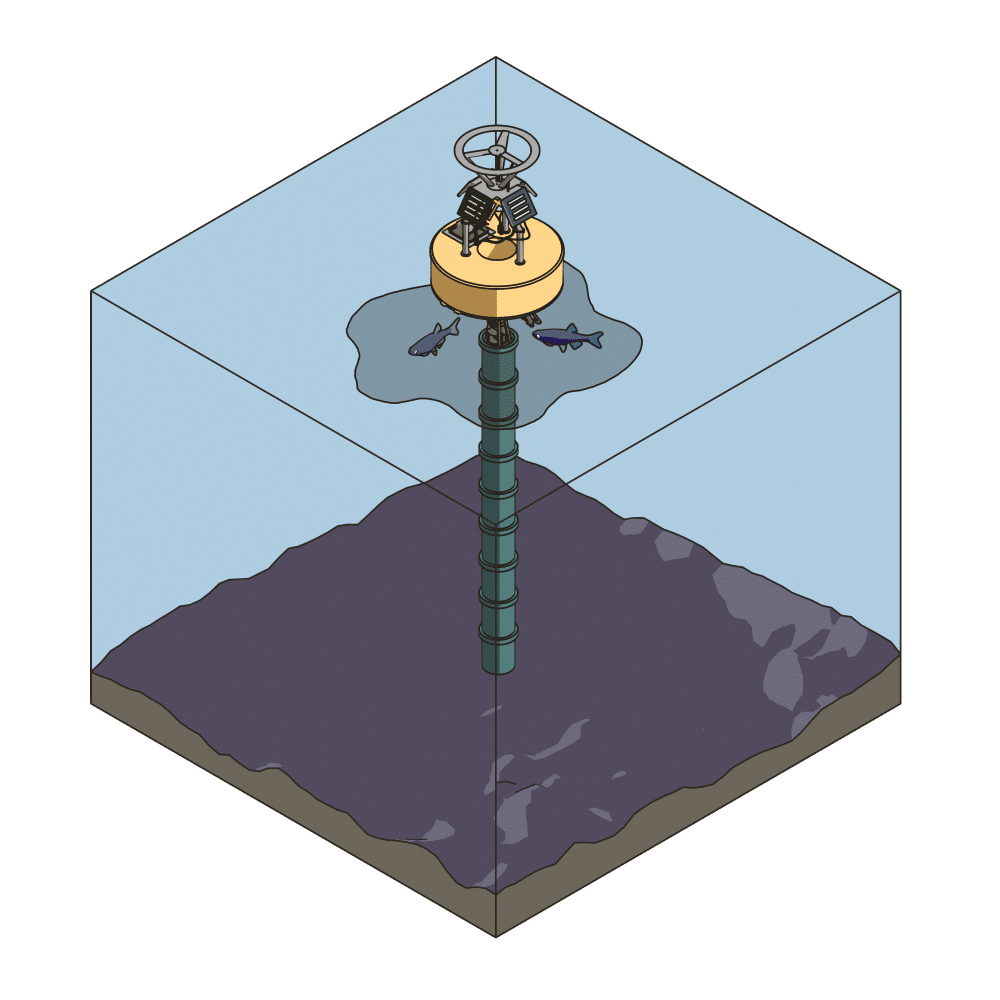
Featured project
Show on map
Latest technology update
Show update
Description and purpose of the technology
Artificial upwelling is a theoretical marine Carbon Dioxide Removal (CDR) technology that aims to artificially transport nutrient-rich deep ocean water (DOW) to the surface to stimulate the growth of phytoplankton. Some researchers hypothesize that new phytoplankton growth will absorb atmospheric carbon dioxide and that the carbon will be stored over meaningful timescales when the dead phytoplankton biomass sinks to the ocean floor. Artificial upwelling is at best unproven and evidence suggests it could pose threats to fisheries, artisanal fishing communities, ecological cycles and the climate.
The process of transporting DOW to the surface is called upwelling. Natural upwelling is caused by winds and the rotation of the earth, which mixes the generally colder, deep water with water in upper ocean layers in certain ocean areas. DOW is often rich in nutrients and can therefore increase primary productivity in the upper ocean layers that receive sunlight. Proponents of the technology claim that it could potentially alleviate pressure on fish stocks, and that upwelled cold DOW may cause localized cooling, for example to the atmosphere above the sea surface and coral reef areas that suffer from bleaching events. [1]
Over the past fifty years, various artificial upwelling technologies have been tested in laboratory and outdoor trials. Electrical pumps are considered to be too expensive, and using temperature or salinity gradients too inefficient. More recent approaches involve air-lift pumps, operating with solar energy and compressed air as well as wind or wave-powered systems. Irrespective of the method used, artificial upwelling requires using pipes that reach hundreds of meters deep, often in combination with floating or submersible platforms. [2] If installed on a larger scale, such structures could cause serious issues for marine life, shipping and fisheries.
At least 20 outdoor trials have been conducted in recent decades, but their stated aims have not been met and there is little evidence to suggest that phytoplankton carbon will actually be stored on the ocean floor. Artificial upwelling is based on a false equivalence between the complexities of natural upwelling events and artificial ones and, ironically, the method may also “upwell” carbon by bringing DOW that is rich in dissolved inorganic carbon to the surface. [3] Furthermore, artificial upwelling would result in numerous environmental problems, including unpredictable and potentially highly damaging impacts on marine ecosystems. [4]
Actors involved
Most research activities and open-ocean trials have so far been conducted and funded by universities and public research institutions in China, the European Union, Japan, Norway and the USA. [5] research project have included the following:
- China’s Zhejiang University has been studying the technical details of artificial upwelling for several decades, and has undertaken several outdoor trials to test and develop upwelling technology, for example in Qiandao Lake and in coastal areas. Other trials have involved using a water tank, and the University has conducted related research and modeling studies, including one examining combining kelp farming with artificial upwelling. [6]
- Between 1989 and 2012 scientists conducted upwelling trials off the coast of Japan, funded by Japanese government agencies. Upwelling trials in four Norwegian fjords, funded by Norwegian research institutions and hydropower plants, were also carried out between 2002 and 2010. [7]
- The European Commission-funded pan-European research project Ocean artUp, coordinated by the German GEOMAR Helmholtz Centre for Ocean Research, aimed to study the feasibility, effectiveness and associated risks of artificial upwelling as well as its potential for increasing ocean productivity and fish stocks, and enhancing oceanic carbon dioxide sequestration. The five-year project (2017 – 2021) included open-ocean artificial upwelling trials in Taliarte harbor in the Canary Islands. In 2020, GEOMAR also conducted trials in the Humboldt Current off the coast of Peru, as part of the CUSCO project, financed by the German Ministry of Education and Research. [8]
- The US National Science Foundation funded three artificial upwelling studies in waters off of Hawaii between 1992 and 2008. Since 2019, the US Department of Energy has supported the pilot-scale Blue Fields Demonstration project which aims to supply macroalgae with nutrients by upwelling DOW. The proposed upwelling devices would be installed three km off West Hawaii and include a 40m² swimming platform as well as wave-powered pumps with pipes extending to a depth of up to 300m. [9]
- US-based Ocean-Based Climate Solutions, a private company, has also tested artificial upwelling technology in several open-ocean trials off Morro Bay, California, with the aim of commercializing their approach.
- US-based The Climate Foundation (TCF), founded in 2007 and directed by Brian von Herzen, tested wave-powered upwelling technology 100 km north of Hawaii in 2008. TCF announced plans for upwelling projects in a coastal reef area in the Philippines and in Storm Bay, Tasmania, among other locations, with the aim of restoring seaweed production. [10]
An example of a commercial-scale project that uses artificial upwelling is UK-based Brilliant Planet Ltd, which is selling carbon credits generated by growing microalgae in on-shore, seawater-filled raceway ponds, harvesting and drying the algae and burying it in lined landfill sites in desert areas. The company is using artificial upwelling to pump nutrient-rich deep-sea water into their ponds in order to provide the algae with the necessary nutrients and carbon dioxide.
The company claims that the algal biomass and the carbon it contains can be safely stored for more than 1,000 years because the landfill sites are lined with a geomembrane and the biomass is dry, very salty and acidic. Following pilot trials in South Africa, Morocco and Oman, Brilliant Planet Ltd has leased 6,100 hectares of land outside Akhfenir in southern Morocco and built three hectares of raceway ponds. Brilliant Planet has announced plans to expand its Morocco raceway ponds to 200 hectares and later 1,000 hectares, and is also interested in other sites, including coastal deserts in Chile and Namibia.
Impacts of the technology
An international team of scientists in Kiel, Germany, modeled the effects of artificial upwelling on a global scale, and determined that the method wasn’t feasible: “this method has […] a very limited sequestration potential and a risk of substantial side effects”. [11] The Joint Group of Experts on the Scientific Aspects of Marine Environmental Protection (GESAMP), a body advising the United Nations, also confirmed that the benefits of artificial upwelling would be limited and that the field studies carried out to date did not provide evidence that carbon could be sequestered on larger scale. Both sets of researchers highlighted potentially severe environmental and socio-political risks associated with artificial upwelling, such as ocean deoxygenation, increased release of methane and substantial changes in species composition, as well as potential transboundary impacts on artisanal fisherfolk, coastal communities, fisheries and weather patterns. [12]
Additional impacts include the fact that artificial upwelling can result in changes to the composition of dissolved gasses, which could mean that additional carbon uptake by the ocean increases ocean acidification. Upwelling of nutrient-rich DOW may release additional carbon dioxide to the atmosphere given that it is often also rich in dissolved carbon, and enhanced biological productivity can deplete oxygen levels in the upper ocean and cause harm to marine life.
Modeling studies have also predicted that upwelling of colder DOW increases the absorption of heat in subsurface ocean waters. Therefore, when upwelling stops, the absorbed heat would be re-released into the atmosphere, resulting in additional warming. [13] In practice, this termination effect would mean that once upwelling devices were switched on, they could never be turned off.
Artificial upwelling has also been predicted to influence ocean circulation and affect agricultural production and therefore livelihoods as a result of changes in weather patterns. [14] If deployed on a large scale, artificial upwelling would require building and installing large structures in the ocean such as plastic pipes several hundred meters long, and floating platforms with the necessary energy infrastructure. [15] Although there is little information on the potential environmental impacts of the construction and maintenance of these structures on marine life, they are likely to have significant effects on biodiversity.
Reality check
Numerous relatively small-scale outdoor artificial upwelling experiments have already been conducted in the deep ocean, lakes and fjords, both to explore the potential of the technology to increase the productivity of fish and and sea food farming and sequester carbon dioxide. There are more projects in the pipeline, but due to the costs involved, the research focus is shifting to coastal areas and combining artificial upwelling with commercial mariculture.
Further reading
ETC Group and Heinrich Böll Foundation, Geoengineering Map, https://map.geoengineeringmonitor.org/
Video about the importance of whales for the natural upwelling and nutrient supply in the upper ocean layers: www.youtube.com/watch?v=M18HxXve3CM
End notes
[1] GESAMP (2019) High level review of a wide range of proposed marine geoengineering techniques, Boyd and Vivian (eds), IMO/FAO/UNESCO-IOC/UNIDO/WMO/IAEA/UN/UN Environment/UNDP/ISA Joint Group of Experts on the Scientific Aspects of Marine Environmental Protection, Rep. Stud. GESAMP No. 98, 144 p., http://www.gesamp.org/publications/high-level-review-of-a-wide-range-of-proposed-marine-geoengineering-techniques
[2] ETC Group and Heinrich Böll Foundation (2020) Geoengineering Map: Artificial Upwelling, https://map.geoengineeringmonitor.org
[3] Oschlies, et al. (2010) Climate engineering by artificial ocean upwelling: Channeling the sorcerer’s apprentice, in: Geophysical Research Letters, Vol. 37(4), https://agupubs.onlinelibrary.wiley.com/doi/full/10.1029/2009GL041961; Dutreuil, et al. (2009) Impact of enhanced vertical mixing on marine biogeochemistry: lessons for geo-engineering and natural variability, in: Biogeosciences, Vol. 6: 901 – 912, https://www.biogeosciences.net/6/901/2009/
[4] Bauman, et al. (2015) Augmenting the Biological Pump: The Shortcomings of Geoengineered Upwelling, in: Oceanography, Vol. 27(3): 17 – 23, https://tos.org/oceanography/article/augmenting-the-biological-pump-the-shortcomings-ofgeoengineered-upwelling
[5] Ibid (ETC Group and Heinrich Böll Foundation (2020))
[6] ETC Group and Heinrich Böll Foundation (2020) Geoengineering Map: Artificial Upwelling, https://map.geoengineeringmonitor.org, https://map.geoengineeringmonitor.org/other/zhejiang-university-artificial-upwelling/
[7] Ibid (ETC Group and Heinrich Böll Foundation (2020))
[8] ETC Group and Heinrich Böll Foundation (2020) Geoengineering Map, https://map.geoengineeringmonitor.org/other/ocean-artup/, https://map.geoengineeringmonitor.org/Carbon-Cioxide-Removal/cusco-peru/
[9] Ibid (ETC Group and Heinrich Böll Foundation (2020))
[10] Ibid (ETC Group and Heinrich Böll Foundation (2020))
[11] Ibid (Oschlies, et al. (2010)); IFM-GEOMAR (2010) CO2 Reduction by artificial ocean upwelling?, press release, published online: February 16, 2010, https://www.geomar.de/uploads/media/pm_2010_10_zauberlehrling_e.pdf
[12] Ibid (GESAMP (2019), Oschlies, et al. (2010)); IFM-GEOMAR (2010)
[13] Ibid (GESAMP (2019), Oschlies, et al. (2010))
[14] Ibid (GESAMP (2019))
[15] Ibid (ETC Group and Heinrich Böll Foundation (2020))
Artificial Upwelling
TIPO
Zonas de despliegue
Propuesta

Proyecto destacado
Mostrar en el mapa
Última actualización de la tecnología
Mostrar actualización
Descripción y propósito de la tecnología
Artificial upwelling is a theoretical marine Carbon Dioxide Removal (CDR) technology that aims to artificially transport nutrient-rich deep ocean water (DOW) to the surface to stimulate the growth of phytoplankton. Some researchers hypothesize that new phytoplankton growth will absorb atmospheric carbon dioxide and that the carbon will be stored over meaningful timescales when the dead phytoplankton biomass sinks to the ocean floor. Artificial upwelling is at best unproven and evidence suggests it could pose threats to fisheries, artisanal fishing communities, ecological cycles and the climate.
The process of transporting DOW to the surface is called upwelling. Natural upwelling is caused by winds and the rotation of the earth, which mixes the generally colder, deep water with water in upper ocean layers in certain ocean areas. DOW is often rich in nutrients and can therefore increase primary productivity in the upper ocean layers that receive sunlight. Proponents of the technology claim that it could potentially alleviate pressure on fish stocks, and that upwelled cold DOW may cause localized cooling, for example to the atmosphere above the sea surface and coral reef areas that suffer from bleaching events. [1]
Over the past fifty years, various artificial upwelling technologies have been tested in laboratory and outdoor trials. Electrical pumps are considered to be too expensive, and using temperature or salinity gradients too inefficient. More recent approaches involve air-lift pumps, operating with solar energy and compressed air as well as wind or wave-powered systems. Irrespective of the method used, artificial upwelling requires using pipes that reach hundreds of meters deep, often in combination with floating or submersible platforms. [2] If installed on a larger scale, such structures could cause serious issues for marine life, shipping and fisheries.
At least 20 outdoor trials have been conducted in recent decades, but their stated aims have not been met and there is little evidence to suggest that phytoplankton carbon will actually be stored on the ocean floor. Artificial upwelling is based on a false equivalence between the complexities of natural upwelling events and artificial ones and, ironically, the method may also “upwell” carbon by bringing DOW that is rich in dissolved inorganic carbon to the surface. [3] Furthermore, artificial upwelling would result in numerous environmental problems, including unpredictable and potentially highly damaging impacts on marine ecosystems. [4]
Actores involucrados
Most research activities and open-ocean trials have so far been conducted and funded by universities and public research institutions in China, the European Union, Japan, Norway and the USA. [5] research project have included the following:
- China’s Zhejiang University has been studying the technical details of artificial upwelling for several decades, and has undertaken several outdoor trials to test and develop upwelling technology, for example in Qiandao Lake and in coastal areas. Other trials have involved using a water tank, and the University has conducted related research and modeling studies, including one examining combining kelp farming with artificial upwelling. [6]
- Between 1989 and 2012 scientists conducted upwelling trials off the coast of Japan, funded by Japanese government agencies. Upwelling trials in four Norwegian fjords, funded by Norwegian research institutions and hydropower plants, were also carried out between 2002 and 2010. [7]
- The European Commission-funded pan-European research project Ocean artUp, coordinated by the German GEOMAR Helmholtz Centre for Ocean Research, aimed to study the feasibility, effectiveness and associated risks of artificial upwelling as well as its potential for increasing ocean productivity and fish stocks, and enhancing oceanic carbon dioxide sequestration. The five-year project (2017 – 2021) included open-ocean artificial upwelling trials in Taliarte harbor in the Canary Islands. In 2020, GEOMAR also conducted trials in the Humboldt Current off the coast of Peru, as part of the CUSCO project, financed by the German Ministry of Education and Research. [8]
- The US National Science Foundation funded three artificial upwelling studies in waters off of Hawaii between 1992 and 2008. Since 2019, the US Department of Energy has supported the pilot-scale Blue Fields Demonstration project which aims to supply macroalgae with nutrients by upwelling DOW. The proposed upwelling devices would be installed three km off West Hawaii and include a 40m² swimming platform as well as wave-powered pumps with pipes extending to a depth of up to 300m. [9]
- US-based Ocean-Based Climate Solutions, a private company, has also tested artificial upwelling technology in several open-ocean trials off Morro Bay, California, with the aim of commercializing their approach.
- US-based The Climate Foundation (TCF), founded in 2007 and directed by Brian von Herzen, tested wave-powered upwelling technology 100 km north of Hawaii in 2008. TCF announced plans for upwelling projects in a coastal reef area in the Philippines and in Storm Bay, Tasmania, among other locations, with the aim of restoring seaweed production. [10]
An example of a commercial-scale project that uses artificial upwelling is UK-based Brilliant Planet Ltd, which is selling carbon credits generated by growing microalgae in on-shore, seawater-filled raceway ponds, harvesting and drying the algae and burying it in lined landfill sites in desert areas. The company is using artificial upwelling to pump nutrient-rich deep-sea water into their ponds in order to provide the algae with the necessary nutrients and carbon dioxide.
The company claims that the algal biomass and the carbon it contains can be safely stored for more than 1,000 years because the landfill sites are lined with a geomembrane and the biomass is dry, very salty and acidic. Following pilot trials in South Africa, Morocco and Oman, Brilliant Planet Ltd has leased 6,100 hectares of land outside Akhfenir in southern Morocco and built three hectares of raceway ponds. Brilliant Planet has announced plans to expand its Morocco raceway ponds to 200 hectares and later 1,000 hectares, and is also interested in other sites, including coastal deserts in Chile and Namibia.
Impactos de la tecnología
An international team of scientists in Kiel, Germany, modeled the effects of artificial upwelling on a global scale, and determined that the method wasn’t feasible: “this method has […] a very limited sequestration potential and a risk of substantial side effects”. [11] The Joint Group of Experts on the Scientific Aspects of Marine Environmental Protection (GESAMP), a body advising the United Nations, also confirmed that the benefits of artificial upwelling would be limited and that the field studies carried out to date did not provide evidence that carbon could be sequestered on larger scale. Both sets of researchers highlighted potentially severe environmental and socio-political risks associated with artificial upwelling, such as ocean deoxygenation, increased release of methane and substantial changes in species composition, as well as potential transboundary impacts on artisanal fisherfolk, coastal communities, fisheries and weather patterns. [12]
Additional impacts include the fact that artificial upwelling can result in changes to the composition of dissolved gasses, which could mean that additional carbon uptake by the ocean increases ocean acidification. Upwelling of nutrient-rich DOW may release additional carbon dioxide to the atmosphere given that it is often also rich in dissolved carbon, and enhanced biological productivity can deplete oxygen levels in the upper ocean and cause harm to marine life.
Modeling studies have also predicted that upwelling of colder DOW increases the absorption of heat in subsurface ocean waters. Therefore, when upwelling stops, the absorbed heat would be re-released into the atmosphere, resulting in additional warming. [13] In practice, this termination effect would mean that once upwelling devices were switched on, they could never be turned off.
Artificial upwelling has also been predicted to influence ocean circulation and affect agricultural production and therefore livelihoods as a result of changes in weather patterns. [14] If deployed on a large scale, artificial upwelling would require building and installing large structures in the ocean such as plastic pipes several hundred meters long, and floating platforms with the necessary energy infrastructure. [15] Although there is little information on the potential environmental impacts of the construction and maintenance of these structures on marine life, they are likely to have significant effects on biodiversity.
Visión realista
Numerous relatively small-scale outdoor artificial upwelling experiments have already been conducted in the deep ocean, lakes and fjords, both to explore the potential of the technology to increase the productivity of fish and and sea food farming and sequester carbon dioxide. There are more projects in the pipeline, but due to the costs involved, the research focus is shifting to coastal areas and combining artificial upwelling with commercial mariculture.
Lectura complementaria
ETC Group and Heinrich Böll Foundation, Geoengineering Map, https://map.geoengineeringmonitor.org/
Video about the importance of whales for the natural upwelling and nutrient supply in the upper ocean layers: www.youtube.com/watch?v=M18HxXve3CM
Notas finales
[1] GESAMP (2019) High level review of a wide range of proposed marine geoengineering techniques, Boyd and Vivian (eds), IMO/FAO/UNESCO-IOC/UNIDO/WMO/IAEA/UN/UN Environment/UNDP/ISA Joint Group of Experts on the Scientific Aspects of Marine Environmental Protection, Rep. Stud. GESAMP No. 98, 144 p., http://www.gesamp.org/publications/high-level-review-of-a-wide-range-of-proposed-marine-geoengineering-techniques
[2] ETC Group and Heinrich Böll Foundation (2020) Geoengineering Map: Artificial Upwelling, https://map.geoengineeringmonitor.org
[3] Oschlies, et al. (2010) Climate engineering by artificial ocean upwelling: Channeling the sorcerer’s apprentice, in: Geophysical Research Letters, Vol. 37(4), https://agupubs.onlinelibrary.wiley.com/doi/full/10.1029/2009GL041961; Dutreuil, et al. (2009) Impact of enhanced vertical mixing on marine biogeochemistry: lessons for geo-engineering and natural variability, in: Biogeosciences, Vol. 6: 901 – 912, https://www.biogeosciences.net/6/901/2009/
[4] Bauman, et al. (2015) Augmenting the Biological Pump: The Shortcomings of Geoengineered Upwelling, in: Oceanography, Vol. 27(3): 17 – 23, https://tos.org/oceanography/article/augmenting-the-biological-pump-the-shortcomings-ofgeoengineered-upwelling
[5] Ibid (ETC Group and Heinrich Böll Foundation (2020))
[6] ETC Group and Heinrich Böll Foundation (2020) Geoengineering Map: Artificial Upwelling, https://map.geoengineeringmonitor.org, https://map.geoengineeringmonitor.org/other/zhejiang-university-artificial-upwelling/
[7] Ibid (ETC Group and Heinrich Böll Foundation (2020))
[8] ETC Group and Heinrich Böll Foundation (2020) Geoengineering Map, https://map.geoengineeringmonitor.org/other/ocean-artup/, https://map.geoengineeringmonitor.org/Carbon-Cioxide-Removal/cusco-peru/
[9] Ibid (ETC Group and Heinrich Böll Foundation (2020))
[10] Ibid (ETC Group and Heinrich Böll Foundation (2020))
[11] Ibid (Oschlies, et al. (2010)); IFM-GEOMAR (2010) CO2 Reduction by artificial ocean upwelling?, press release, published online: February 16, 2010, https://www.geomar.de/uploads/media/pm_2010_10_zauberlehrling_e.pdf
[12] Ibid (GESAMP (2019), Oschlies, et al. (2010)); IFM-GEOMAR (2010)
[13] Ibid (GESAMP (2019), Oschlies, et al. (2010))
[14] Ibid (GESAMP (2019))
[15] Ibid (ETC Group and Heinrich Böll Foundation (2020))
